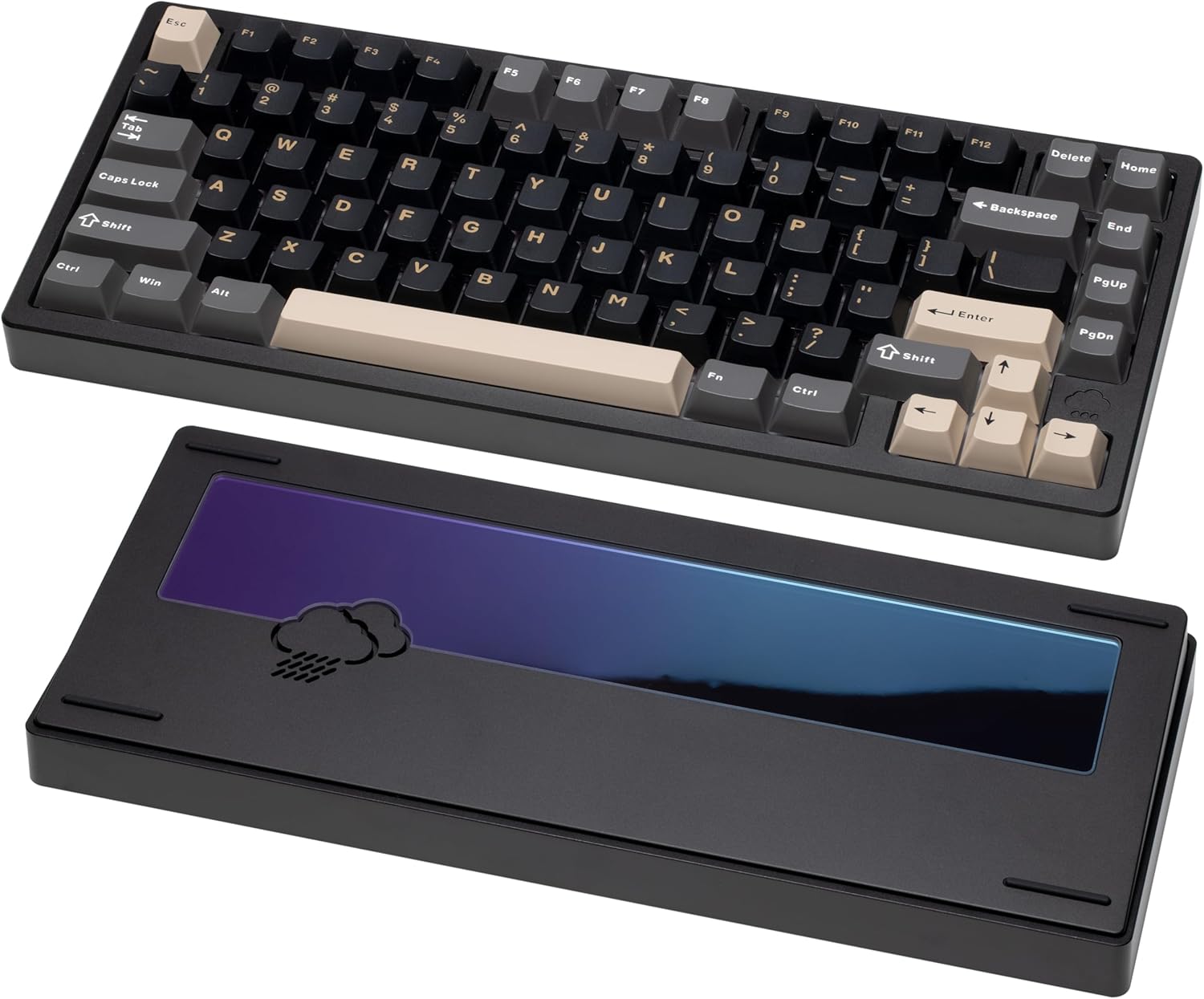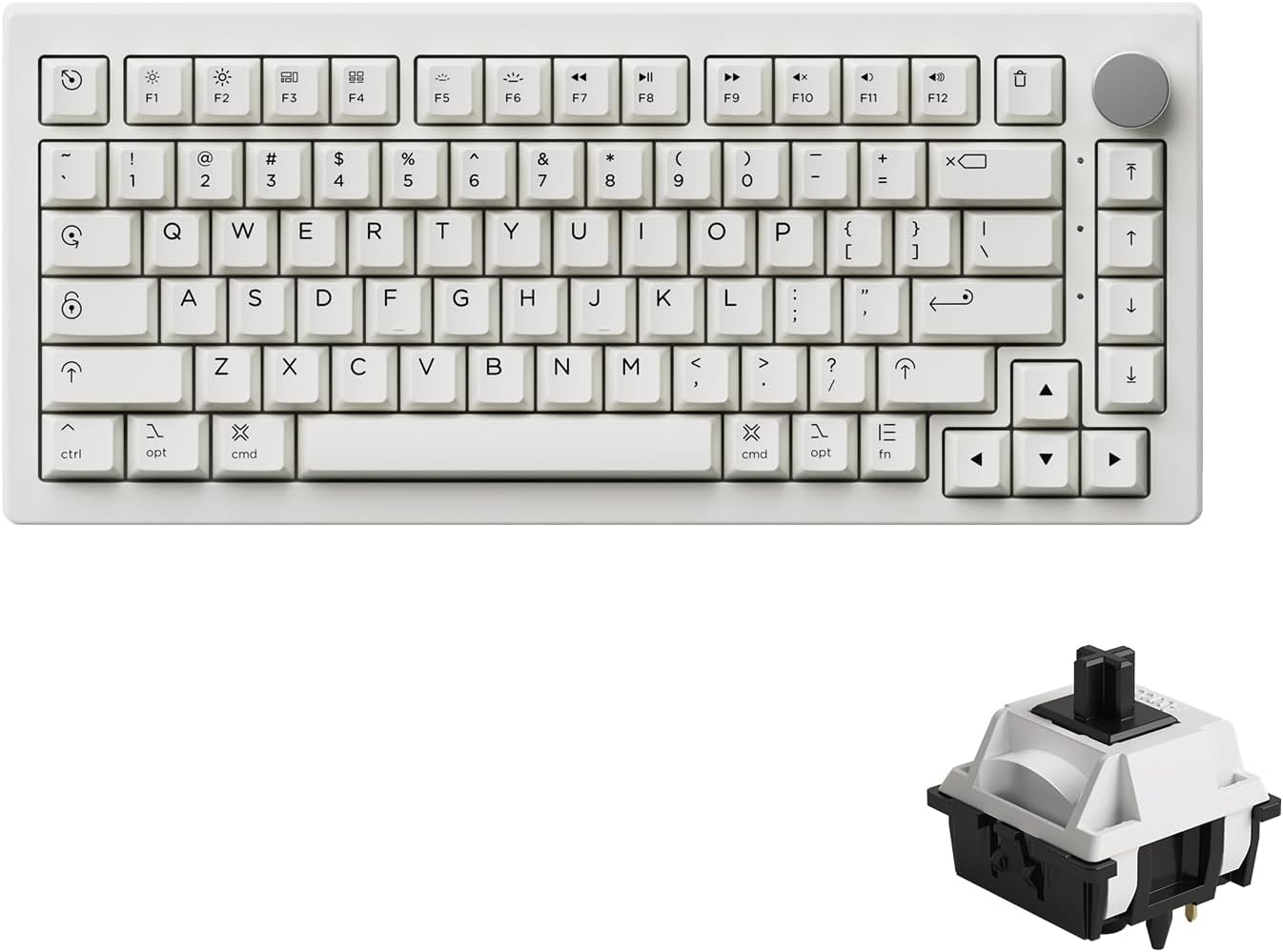Mechanical Keyboard Sound Dampening Tips for Quiet Use
Mechanical keyboards are a joy to type on, offering tactile feedback and customization options galore. However, their inherent design can sometimes lead to a significant amount of noise. If you're working in a shared office, streaming, or simply prefer a quieter environment, sound dampening is crucial. This guide will explore various techniques and products to help you achieve a more peaceful typing experience.
Understanding Keyboard Noise
Before diving into solutions, let's understand the sources of keyboard noise:
- Switch Type: Clicky switches (like Cherry MX Blues) are deliberately loud. Tactile and linear switches can also produce noise depending on their design and materials.
- Keycaps: Thicker keycaps, especially those made of PBT plastic, tend to produce a deeper, more satisfying sound compared to thin ABS keycaps.
- Case Material: Plastic cases often resonate more than metal cases, amplifying sound.
- Mounting Style: The way the switches are mounted to the case significantly impacts noise. Gasket-mounted keyboards are generally quieter.
- Stabilizers: Stabilizers prevent larger keys (like the spacebar and Shift keys) from wobbling, but poorly tuned stabilizers can rattle.
Sound Dampening Techniques
Here are several methods to reduce keyboard noise:
1. Switch Selection
Choosing quieter switches is the first step. Linear switches like Cherry MX Reds or Browns are a good starting point. For an even quieter experience, consider silent linear switches like Cherry MX Silent Reds or ZealPC Zilent V2s.
2. O-Rings
O-rings are small rubber rings that you place around the stem of the keycap. They cushion the impact when the keycap bottoms out, reducing noise. They are inexpensive and easy to install.
3. Keyboard Case Foam
Adding foam inside the keyboard case absorbs vibrations and reduces resonance. You can use pre-cut foam inserts or cut your own from acoustic foam.
4. Switch Films
Switch films are thin plastic or foam sheets that fit between the top and bottom housings of a mechanical keyboard switch. They reduce wobble and improve sound consistency.
5. Stabilizer Modification
Properly lubing and tuning your stabilizers can significantly reduce rattle. Use dielectric grease on the wire ends and a thin lubricant on the stabilizer housings.
6. Keycap Material and Profile
PBT keycaps are generally preferred over ABS keycaps due to their durability and deeper sound profile. Different keycap profiles (like Cherry or OEM) can also affect sound.
7. Desk Mat
A desk mat under your keyboard can absorb vibrations and reduce noise transmission to your desk.
Featured Keyboards with Excellent Sound Dampening
Several mechanical keyboards are designed with sound dampening in mind. Here are some notable examples:
EPOMAKER EA75

The EPOMAKER EA75 is a 75% mechanical keyboard that prioritizes a smooth and quiet typing experience. It features factory-lubed switches, a gasket-mounted design, and multiple layers of sound dampening. The tri-mode connectivity (wired, Bluetooth, and 2.4GHz) and versatile rotary knob make it a great choice for both productivity and casual gaming.
Pros:
- Excellent sound dampening
- Versatile connectivity
- Customizable rotary knob
Cons:
- Keycaps could be higher quality
- Software customization is limited
WOBKEY Rainy 75

The WOBKEY Rainy 75 is a minimalist mechanical keyboard built for a premium typing experience. It features a solid aluminum case, five-layer acoustic dampening, and a gasket-mounted design for soft, quiet keystrokes. With tri-mode connectivity and hot-swappable switches, the Rainy75 delivers a refined, customizable experience ideal for both work and play.
Pros:
- Premium build quality
- Excellent sound dampening
- Clean, minimalist design
Cons:
- Relatively expensive
- Limited availability
Keychron K2 HE

The Keychron K2 HE stands out with its Hall-Effect Gateron double-rail magnetic switches, allowing for ultra-responsive input. Its gasket-mounted design and option for a wood frame contribute to noise reduction. The K2 HE also offers 2.4GHz wireless, Bluetooth 5.2, and USB-C connectivity, QMK/VIA programmability, and hot-swappability.
Pros:
- Highly customizable actuation
- Versatile connectivity options
- Premium build with aluminum and wood frame
Cons:
- Higher price point
- Hall Effect switches may not be preferred by all
AULA F99

The AULA F99 is a compact 96% mechanical keyboard featuring tri-mode connectivity and a powerful 8000mAh battery. Its gasket-mounted structure, five-layer sound dampening, and pre-lubed linear switches offer a soft, responsive typing experience with rich acoustics. This keyboard is a versatile choice for both typists and gamers.
Pros:
- Excellent battery life
- Good sound dampening
- Hot-swappable switch sockets
Cons:
- 96% layout may take time to adjust to
- Software customization may be limited
Akko 5075B Plus Air

The Akko 5075B Plus Air is a Mac-themed, 75% wireless mechanical keyboard featuring hot-swappable sockets and durable PBT dye-sub keycaps. It supports tri-mode connectivity (Bluetooth 5.0, 2.4GHz, and USB-C) and includes a programmable RGB backlight with per-key effects. A customizable knob lets you adjust brightness, volume, or other functions using the Akko Cloud Driver.
Pros:
- Mac-themed design
- Hot-swappable sockets
- Customizable knob
Cons:
- Plastic case may not be as durable as metal options
- Software can be buggy
Additional Tips
- Lubricate Switches: Lubing your switches can significantly reduce friction and noise.
- Consider a Custom Build: Building your own keyboard allows you to choose every component, ensuring optimal sound dampening.
- Experiment: Don't be afraid to try different combinations of techniques and products to find what works best for you.
Conclusion
Achieving a quieter mechanical keyboard is possible with the right techniques and products. By understanding the sources of keyboard noise and implementing the methods discussed in this guide, you can enjoy a more peaceful and productive typing experience. Explore the featured keyboards and experiment with different sound dampening techniques to find your perfect balance of sound and feel.
What are your favorite sound dampening tips? Share your experiences in the comments below!
Mechanical Keyboard Starter Guide
Ever wanted to learn about or build your own mechanical keyboard? This guide will show you everything you need to know.
Learn More